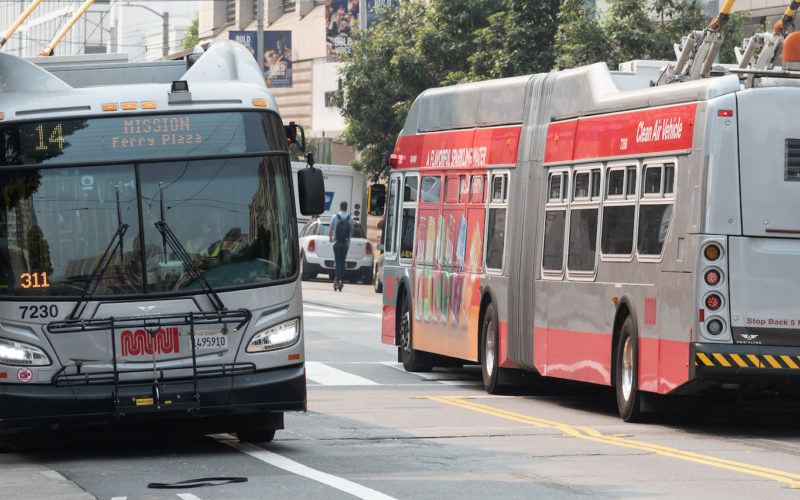

photo by kptyson
Transportation professionals in the New York/New Jersey region have been shaking their heads in disgust over the past two months as revelations emerged about the George Washington Bridge and its deliberate disruptions on orders from at or near the highest level of the state capitol in Trenton. Those of us who want our transportation system to function at its best – a goal that should be shared by our leaders – are aghast that in addition to all the exciting engineering and financing and management challenges we happily signed up to confront, we apparently also have to look over our shoulders and worry about sabotage from our own leaders and the artificial crises they seem increasingly to create.
Whether it’s four-day traffic jams caused by intentional malice in New Jersey or the logjams every day of the year in Washington, leadership matters. So does the lack of it. That’s why TransitCenter has selected leadership development and training as one of our areas of focus.
This month we started a project with the Eno Center for Transportation that will undertake a review of the large metropolitan regions in the U.S. and assess the ways in which different geographic regions govern their transit systems. Our nation has many heterogeneous models. In some cases, transit system board members are appointed by state Governors, in others they consist of an assortment of officials from local jurisdictions, and in still others they are directly elected by the people. Some regions have separate transit systems for city and suburb, with or without an umbrella coordinating body like a Metropolitan Planning Organization (MPO), while in other cases it may seem like the transit agency runs buses on the surface of Neptune while the MPO coordinates the moons of Jupiter.
Even big regions have diametrically different approaches. Greater New York has a consolidated Metropolitan Transportation Authority (MTA) created by the state, and comprises the city subway, bus, Long Island Railroad, and Metro North Railroad, the latter of which operates extensively into an adjoining state, Connecticut. By contrast the San Francisco Bay area, despite being located entirely within one state, has a disjointed collection of local jurisdictional agencies — Muni in SF, AC Transit in the East Bay, SamTrans in San Mateo, etc., — with longer-distance trips between those jurisdictions served by BART, Cal Train, and the Sacramento Capitol Corridor joint powers authority, three separate agencies that cross many boundaries and connect with additional agencies as well as each other.
Each organizational structure has its peculiar implications: in New York, it can mean that a State Senator from Buffalo, 350 miles away, may have more influence over a bus line in Brooklyn than a city council member whose district the bus serves does. By contrast, a city council member in Chicago might have absolute influence over the multi-million dollar renovation of a subway station in her district, but is utterly powerless to develop a new van service that will connect her inner city constituents to jobs in the suburban township two miles away.
There’s no Aristotlean ideal of the model transit governance structure, but there may be patterns of attributes that are best achieved with each organizational model. Eno’s experts are going to study those various options and interview participants in each model, so that a clearer picture of governance structure types that most likely produce efficient, well-managed, accountable, and appropriately funded transit systems will emerge. Keeping in character with the type of organization we want to be, we’ll also be frank about what seems to working and what isn’t. By also developing subjective factors like “transparency” or “accountability” to more objective indicators like ridership growth and hours of service, Eno’s research should help local leaders adopt the governance structures that optimize the prospect for success.
We face a lot of challenges in transportation: operating, engineering, technological, communications. Instrumental to all those challenges is the human factor – the leadership challenge. The sad events in New Jersey, despite supposedly being a “traffic study,” taught us nothing about traffic but everything about the need for good leadership.
 On the Brink: Will WMATA’s Progress Be Erased by 2024?
On the Brink: Will WMATA’s Progress Be Erased by 2024?
The experience of being a WMATA rider has substantially improved over the last 18 months, thanks to changes the agency has made like adding off-peak service and simplifying fares. Things are about to get even better with the launch of all-door boarding later this fall, overnight bus service on some lines starting in December, and an ambitious plan to redesign the Metrobus network. But all of this could go away by July 1, 2024.
Read More What’s Going on With Transit Service at the Seven Highest Ridership U.S. Cities? SF Edition
What’s Going on With Transit Service at the Seven Highest Ridership U.S. Cities? SF Edition
As of March 2022, SFMTA was operating 88% of pre-pandemic service and added back even more service in July.
Read More